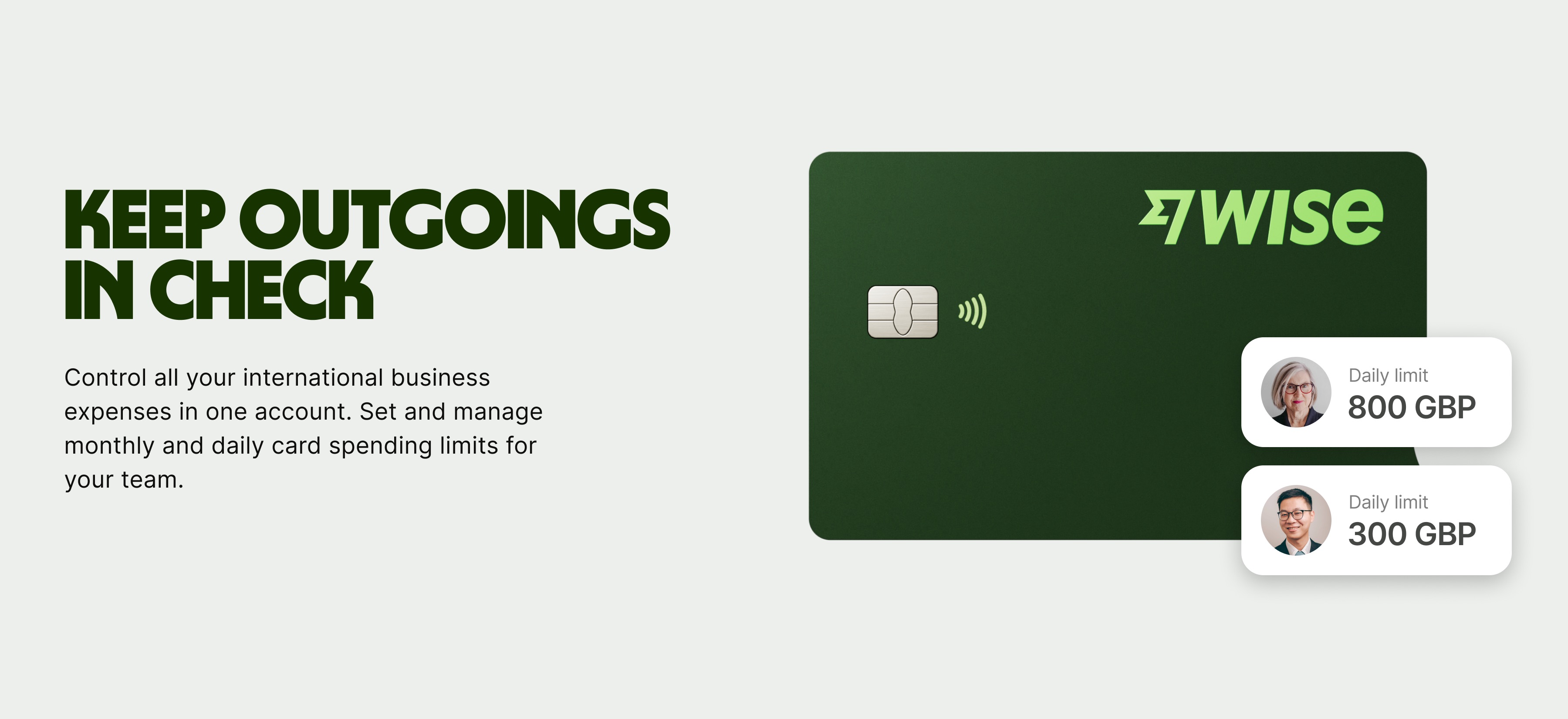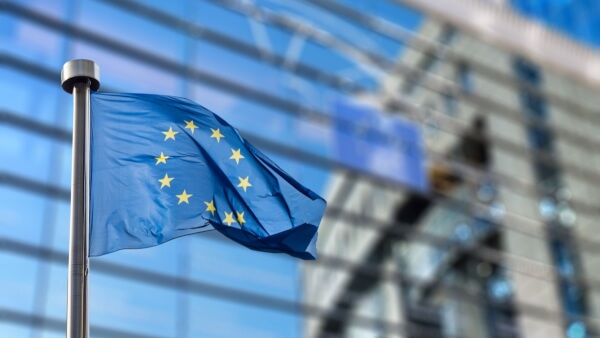Best international payroll providers in 2025
Learn about the top international payroll providers, their features, pricing, customer reviews and how to choose the right provider for your business.

By 2027, textiles sold in the EU must have a Digital Product Passport.¹ It’s part of the Ecodesign for Sustainable Products Regulation (ESPR), and other high-impact sectors are to follow in coming years. For UK businesses trading in the EU, it means having the appropriate systems in place to capture and share product information across borders.
In this guide, we’ll explain what the Digital Product Passport is, its requirements, and the rollout timeline. We’ll also discuss how Wise Business can help you keep cross-border payment costs low as you prepare.
Get started with Wise Business🚀
A Digital Product Passport (DPP) is a digital document that contains comprehensive information about a product over its lifecycle. It was implemented by the EU through the Ecodesign Sustainable Products Regulation (ESPR) in July 2024.²
Every passport will serve as a digital identity of a product. It contains details on raw materials, production, environmental impact, care instructions and what to do with it at the end of its life, including repair and recycling. The idea is to make the supply chains more transparent, allow consumers to make informed choices and help the EU to transition to a circular economy.
Passports will be digitally linked to each product. Customers and regulators can scan it and see verified information straight from the brand. For businesses trading in the EU, this is both a compliance obligation and a chance to demonstrate sustainability practices and product quality in a standardised format.
Each Digital Product Passport will be connected to a product through a unique digital identifier. For most businesses, this will involve the transition from traditional barcodes to new data carriers that directly connect to an online record.
The most popular one will be QR codes, which customers and regulators can scan to immediately get product information on their devices. In industrial and logistics applications, industry groups are considering radio frequency identification (RFID) as a method of capturing large data.³ In others, digital watermarks on the packaging or on the surface of the product can be used.
For businesses, this means thinking about how to integrate these identifiers into products early on. For customers, it means a simple scan gives them details about durability, care, and recycling, helping to build trust and extend the life of the purchase.
The EU has prioritised the following industries under its Ecodesign for Sustainable Products Regulation (ESPR) to require Digital Product Passports. UK companies that sell into these sectors will have to comply in order to continue selling in the EU. Here are the businesses that need to prepare:⁴
Batteries are subject to a separate Battery Regulation (EU) 2023/1542, which establishes a separate battery passport in 2027.⁴ Companies in the battery or electric vehicle supply chain must plan under that law.
What needs to be covered in Digital Product Passports?
The Ecodesign Sustainable Products Regulation (ESPR) establishes the framework of what all Digital Product Passports should include. Although the specifics are yet to be finalised, some of the key requirements have already been identified. Companies that sell their products in the EU will be required to capture, validate, and share this information via a unique product identifier, like a QR code, connected directly to the passport.
A DPP must contain, at least:⁴
It’s the responsibility of the business that places the product on the EU market to ensure the accuracy of this data. As a UK business owner, you would need to collaborate with suppliers to gather information throughout the entire supply chain, not just at the manufacturing stage.
The EU has defined a clear pathway in the Digital Product Passport timeline, starting with textiles and then continuing to other high-impact sectors. Although requirements are still being finalised, businesses already have concrete dates to prepare against:
The later years, 2030 and 2033, will require more detailed supply chain data and more advanced systems.¹ Businesses that begin planning today by identifying suppliers and creating data systems will find compliance less disruptive and more affordable.
The cost of establishing a DPP varies depending on the size of the business, the complexity of its product range, and the type of provider it engages. Brands with minimal product lines will obviously have a very different bill than global retailers with thousands of stock-keeping units (SKUs) and long supply chains.
Most vendors charge a combination of subscription (SaaS) fees and per-QR code charges. Subscriptions usually include access to the platform and functionality such as supply chain mapping, compliance monitoring, and data management. The QR-based pricing model charges companies per passport created, which is more adaptable to businesses with seasonal or fluctuating product volumes.
Providers like Renoon estimate that an entry-level DPP solution to support small businesses can cost less than 10,000 EUR annually, with more advanced solutions to cover mid-sized firms costing between 15,000-50,000 EUR.⁶ In large enterprises with complex supply chains, highly customised systems may cost between 100,000 and 500,000 EUR or more.
Despite this seemingly high investment, those who plan early will not only be ahead of the regulation but will also have the chance to use DPPs to gain customer confidence and open up new avenues in the circular economy.
The rules on DPP are still under development in the EU, but the direction is already clear. The best action you can take, if you trade in Europe, is to start planning now. Investing in the proper systems, mapping your supply chain, and testing solutions early will save you a lot of costs later.
Being ahead of the curve can also put you at an advantage. A powerful DPP will enable you to demonstrate to customers how your products are manufactured, how long they will last, and how they can be repaired or recycled. Such transparency will create trust and new opportunities in terms of resale and circular services.
There is also the issue of price. Investing now may result in lower costs overall, longer-term. Another consideration is that currently a lot of DPP providers are not based in the UK and bill in foreign currencies, which incurs additional costs.


Wise Business can help you save significantly on international payments, with no hidden markup fees or exchange rate markups.
You can send money to over 140+ countries and hold 40+ currencies with Wise Business. That translates to reduced conversion expenses, quicker payment to vendors, and reduced administration when handling subscriptions or bulk transfers.
Failure to comply may lead to blockage of the products in the EU. Similar to other EU regulations, implementation will be left to national authorities, with penalties potentially including fines or market access restrictions.
The regulation will apply to goods placed on the EU market after the compliance dates. Current stock already in circulation is not likely to need retrofitted passports, but new production runs will have to meet the standards.
Digital Product Passports have to remain accessible long after a product has left the shop floor EU guidance requires companies to make sure that customers can find repair, recycling or disposal information at least 5-10 years after the product is no longer sold. This means preparing to host data over a long period of time, either with your systems or with a provider that can ensure access after the item is no longer on the market.
No. The traditional barcodes are being replaced with unique digital identifiers and QR codes that can contain much more information and connect to online records.
Sources used:
Sources last checked: 02-Sept-2025
*Please see terms of use and product availability for your region or visit Wise fees and pricing for the most up to date pricing and fee information.
This publication is provided for general information purposes and does not constitute legal, tax or other professional advice from Wise Payments Limited or its subsidiaries and its affiliates, and it is not intended as a substitute for obtaining advice from a financial advisor or any other professional.
We make no representations, warranties or guarantees, whether expressed or implied, that the content in the publication is accurate, complete or up to date.

Learn about the top international payroll providers, their features, pricing, customer reviews and how to choose the right provider for your business.

Here’s an objective review of the best corporate tax software for International Businesses. Learn about their features, prices and ratings.

There are several reasons why international investment is appealing to UK startups at the moment. With economic uncertainty prevailing, the impact of Brexit...

Learn how to start a business in Mexico, focusing on opportunities and regulations to navigate for successful operations.

Discover the 10 best European cities to start or grow your business in 2025 with funding, talent, and speed you won’t find in the UK.

Step-by-step guidance for starting your business in France, ensuring compliance with local regulations for success.